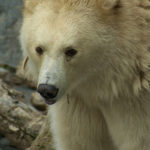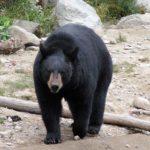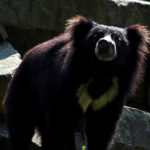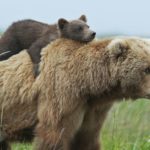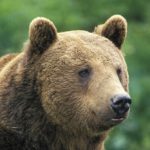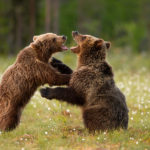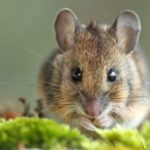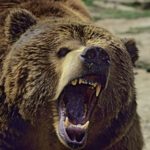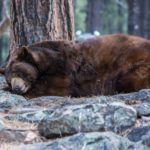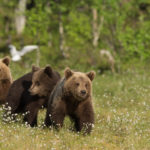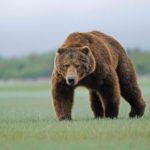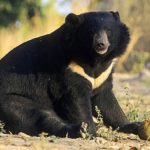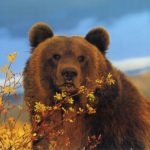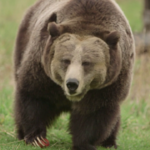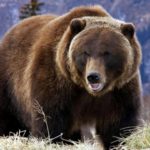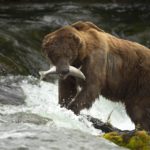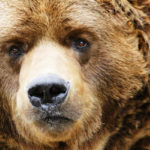Brown bears
 Brown bear can be called one of the most famous predators. In many nations, it is mentioned in fairy tales and legends. This beast has a powerful body, a large head, on which are located small ears and eyes.
Brown bear can be called one of the most famous predators. In many nations, it is mentioned in fairy tales and legends. This beast has a powerful body, a large head, on which are located small ears and eyes.
In the area of the withers, the animal has a hump, which in fact is a muscle, so that a brown bear can strike a giant force. The tail of up to 20 cm in length is hardly visible in thick wool, its color varies from almost black to light brown, but the most typical coloration is brown. On each paw there are five fingers, each of them ends in a 10-centimeter crescent-shaped claw.
The distribution of the brown bear, which used to be very extensive, has now fallen considerably. Today it can be found in Scandinavia and Finland, occasionally in the forests of Central Europe, as well as in the taiga and tundra of Russia and Canada. The size and weight of brown bears vary widely throughout their habitat. Individuals living in Europe grow in length from one and a half to two meters and weigh 150-250 kg, in the central part of Russia their weight rarely exceeds 120 kg.
Far Eastern and North American brown bears reach a weight of 750 or more kilograms and a growth of 2.8-3 meters if they stand on their hind legs. These giants used to be isolated in a separate form, which was called grizzly, but to date there is no such division.
Typical habitats of these animals are littered with windbreaks forests and arrays with a dense thicket of trees and shrubs. They also love the rugged terrain, found in the tundra and high-mountain forests.
The brown bear feeds absolutely everything that is suitable for food. Approximately 3/4 of his diet accounted for vegetable food: berries, nuts, herbs. In conditions of lack of food, the beast eats insects and their larvae, reptiles, rodents, does not disdain carrion. Large individuals can hunt ungulates – both from an ambush, and hiding them. At first glance, clumsy and clumsy, brown bears demonstrate amazing dexterity, and during the pursuit of production can develop speeds of up to 55 km / h.
Far Eastern representatives of the species are pleased to taste salmon, going to spawn (as it happens, see the video below). By the fall, they are so eaten up that they increase their weight by an average of 20%.

